Top speed 309 km/h Length 21 m First flight June 23, 1935 | Wingspan 29 m Introduced 1939 | |
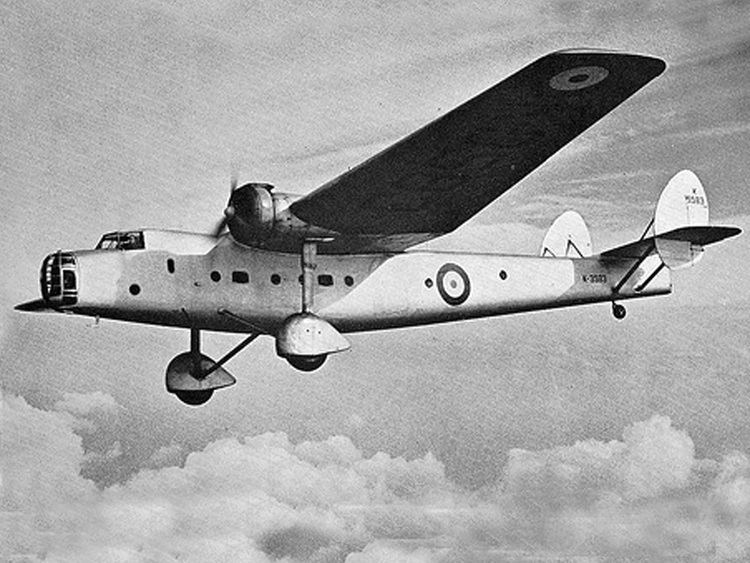 | ||
Bristol bombay
The Bristol Bombay was a British troop transport aircraft adaptable for use as a medium bomber flown by the Royal Air Force (RAF) during the Second World War.
Contents
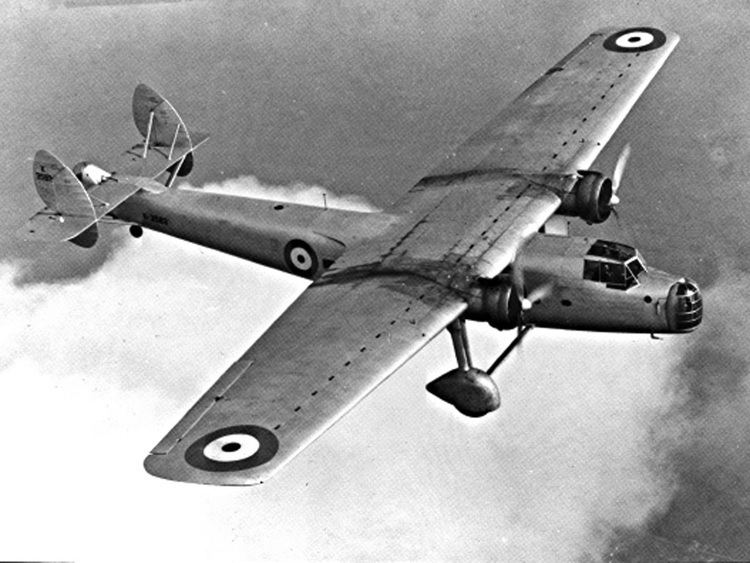
Development
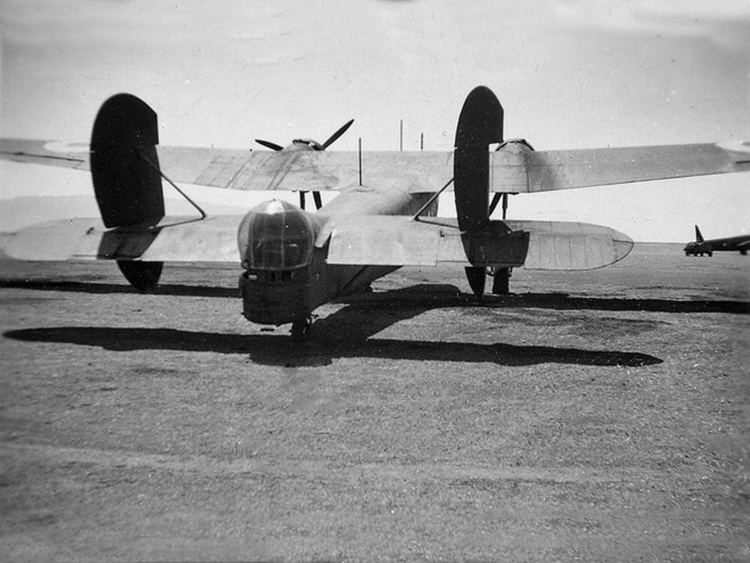
The Bristol Bombay was built to Air Ministry Specification C.26/31 which called for a monoplane bomber-transport aircraft to replace the Vickers Valentia biplane in use in the Middle East and India. The aircraft was required to be capable of carrying 24 troops or an equivalent load of cargo as a transport, while carrying bombs and defensive guns for use as a bomber. This dual-purpose design concept was common to British pre-war designs. Other entries for the specification were the Armstrong Whitworth A.W.23 and the Handley Page HP.51.
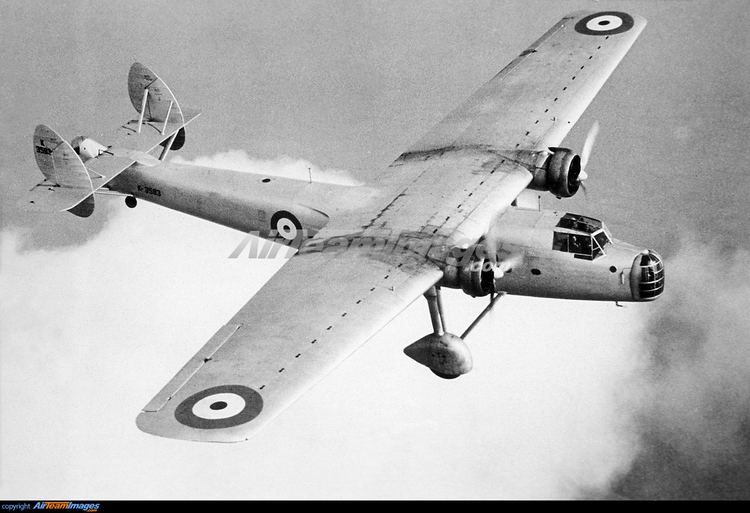
Bristol's design, the Type 130, was a high-wing cantilever monoplane of all-metal construction. Bristol's last monoplane design, the 1927 Bagshot, had suffered from lack of torsional rigidity in the wings leading to aileron reversal. This led to an extensive research program at Bristol which resulted in a wing design with a stressed metal skin rivetted to an internal framework consisting of multiple spars and the ribs. This was the basis of the Bombay's wing, which had seven spars, with high-tensile steel flanges and alclad webs. The aircraft had a twin-tail and a fixed tailwheel undercarriage.

The aircraft's crew consisted of a pilot, who sat in an enclosed cockpit, a navigator/bomb-aimer, whose working position was in the nose, and a radio-operator/gunner, who divided his time between the radio operator's position behind the cockpit and a gun turret in the nose. When the aircraft was operated as a bomber, an additional gunner was carried to man the tail gun position. In the prototype, this position was equipped with a single Lewis gun on a Scarff ring, but in production aircraft, both gun positions were hydraulically-operated gun turrets armed with single Vickers K machine guns. Eight 250 pounds (110 kg) bombs could be carried on racks under the fuselage.
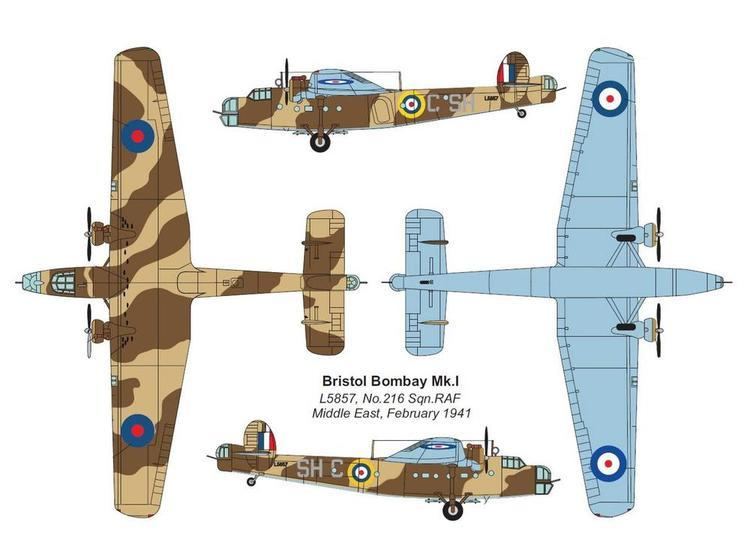
The prototype Type 130 first flew on 23 June 1935, powered by two 750 horsepower (560 kW) Bristol Pegasus III radial engines driving two-bladed propellers. Testing was successful and an order for 80 was placed as the Bombay in July 1937. These differed from the prototype in having more powerful (1,010 hp (750 kW)) engines driving three-bladed Rotol variable-pitch propellers, discarding the wheel spats fitted to the undercarriage mainwheels in the prototype. As Bristol's Filton factory was busy building the more urgent Blenheim, the production aircraft were built by Short & Harland of Belfast. However, the complex nature of the Bombay's wing delayed production at Belfast, with the first Bombay not being delivered until 1939, and the last 30 being cancelled.
Operational history
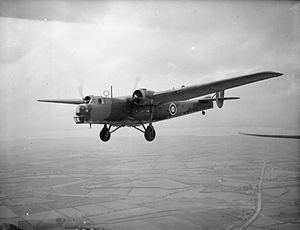
The first production Bombay flew on March 1939, with deliveries to No. 216 Squadron RAF based in Egypt beginning in September that year. Although it was outclassed as a bomber for the European theatre, it saw some service with British-based 271 Squadron ferrying supplies to the British Expeditionary Force in France in 1940. In June 1940, French pilot Jean-Francois Demozay borrowed an abandoned Bombay to ferry himself and 15 troops from France to England, after which he became an ace with the RAF.
The Bombay's main service was in the Middle East, particularly with 216 Squadron, which operated most of the Bombays built at some stage. When the war with Italy began in June 1940, in the absence of more modern aircraft, 216 Squadron's Bombays were used as night bombers as well as in their principal role as transport aircraft. The design bombload of 250 lb bombs under the fuselage was supplemented by improvised bombs thrown out of the cargo door by hand. The aircraft flew bombing sorties against targets in the Western Desert, including Benghazi and Tobruk, and against Italian Somaliland, until the buildup of Vickers Wellington bombers in Egypt allowed the Bombays to concentrate on transport operations.
In the transport role, they ferried supplies and evacuated the wounded during the Siege of Tobruk, while on 2 May 1941, Bombays of No. 216 Squadron RAF evacuated the Greek Royal Family from Crete to Egypt. Later that month, Bombays played an important role in ferrying troops during the Anglo-Iraqi War. Five Bombays were used by the fledgling SAS in their first official operation in the Middle East, a raid on five forward German aerodromes on 17 November 1941.
Lieutenant General William Gott, the highest ranking British officer killed in the war, died when the Bombay in which he was being carried was shot down in the Western Desert on 7 August 1942. He was about to assume command from General Claude Auchinleck. His death opened the way for General Bernard Montgomery to take over.
Bombays evacuated over 2,000 wounded during the Sicily campaign in 1943, and one crew was credited with carrying 6,000 casualties from Sicily and Italy before the type was finally withdrawn from use in 1944.
Variants
Operators
Specifications (Bombay Mk.I)
Data from The British Bomber since 1914
General characteristics
Performance
Armament
